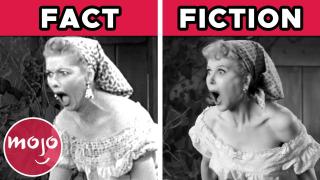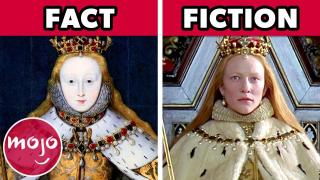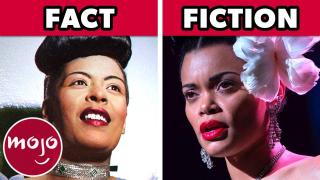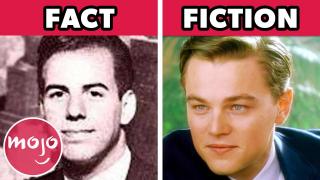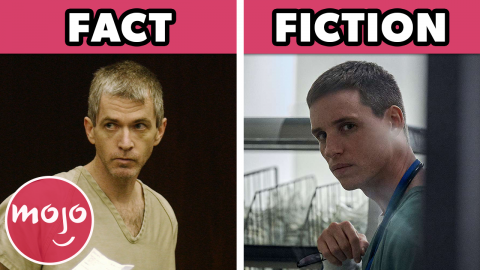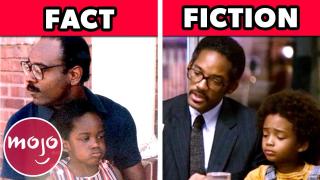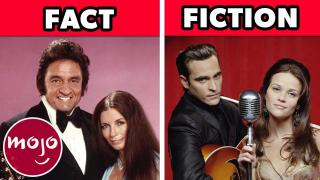Top 10 Things Extremely Wicked, Shockingly Evil and Vile Got Factually Right And Wrong
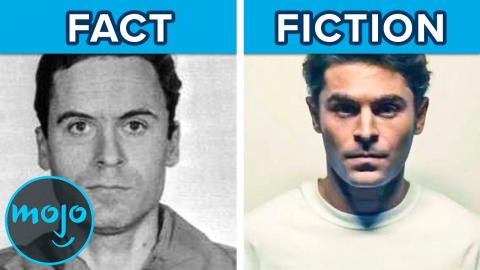
Script written by Nick Spake
#10: Bundy Met Elizabeth Kloepfer in a Bar
True
Top 10 Hechos CORRECTOS e INCORRECTOS Sobre Extremely Wicked, Shockingly Evil and Vile
Joe Berlinger’s film is based on the book “The Phantom Prince: My Life with Ted Bundy.” This memoir was written by Bundy’s real-life girlfriend, Elizabeth Kloepfer, although she had it published under her pseudonym, Elizabeth Kendall. The same alias is used in this biopic, but the relationship between Liz with Ted remains mostly faithful. As depicted in the movie, Liz did meet Bundy at a Seattle bar in 1969 and the two almost immediately hit it off. Speaking with KUTV, her best friend Marylynne Chino recounted Kloepfer and Bundy’s first meeting, “I walked in, and across the room, I saw Ted [Bundy] for the first time. I will never forget the look on his face, it wasn’t evil but he was staring, nursing a beer.”
#9: Kloepfer Was Dependent on Bundy
True
Top 10 Things Being the Ricardos Got Factually Right & Wrong
Being a divorced single parent, Kloepfer thought she hit the jackpot when she met the charismatic Bundy. After spending a platonic night together, Bundy not only grew closer to Kloepfer, but her daughter as well. “I was already planning the wedding and naming the kids,” Kloepfer wrote. “He was telling me that he missed having a kitchen because he loved to cook.” According to “The Stranger Beside Me” by Anne Rule, Bundy and Kloepfer both dated other people during this period – a detail that was omitted from the film. Nevertheless, Kloepfer was still in a serious relationship with Bundy for several years and the two almost got married. As Kloepfer put it, “‘I handed Ted my life and said, ‘Here. Take care of me.’”
#8: A Co-Worker Named Jerry Helped Kloepfer Get Over Bundy
False
One character in the film who is fictionalized is Haley Joel Osment’s Jerry, Liz’s co-worker and eventual love interest after Bundy is caught. Osment reportedly said via IMDb at Sundance, “Jerry is an invented character who is just sort of in the position of trying to pull Liz out of the Bundy black hole and to sort of try to get her to envision a life beyond him.” Speaking with Oxygen.com, director Joe Berlinger explained that “[Liz] had several male figures and several female figures in her life as positive influences, but it just made it easier to reduce them to single composite characters.” Likewise, Liz’s best friend Joanna, played by Angela Sarafyan, was also a composite of multiple people who knew Kloepfer, according to Berlinger.
#7: Bundy Refused to Plead Guilty
True
Top 10 Things Elizabeth (1998) Got Factually Right and Wrong
After Florida authorities captured Bundy, his indictment was read to him in front of a media circus. Just like in the film, Bundy appeared confident that he’d walk away a free man, saying, “I’ll plead ‘not guilty’ right now.” Bundy stuck to his guns throughout his highly-publicized trial, insisting that he was innocent in spite of the evidence piling up. Even when he was offered a plea bargain that would’ve limited his sentence to 75 years, Bundy refused to confess. Of course, the accused serial killer couldn’t win over the court, ultimately being sentenced to death for his heinous crimes. It wasn’t until shortly before his execution in 1989 that Bundy, desperate to buy himself more time, started to drop some truth bombs.
#6: Bundy Escaped Twice
True
Top 10 Things The United States Vs. Billie Holiday Got Factually Right & Wrong
Since Bundy went down as one of the most notorious serial killers in history, you’d think the authorities would’ve had him under a magnifying glass at all times. Believe it or not, Bundy staged not one, but two successful breakouts – both of which are accurately portrayed in “Extremely Wicked.” During his preliminary hearing in Colorado, Bundy was given access to the courthouse library. He seized this opportunity to jump out the second-story window, going on the run for several days before being recaptured. While Bundy was imprisoned at Glenwood Springs, he used a hacksaw blade to carve a square in the ceiling and worm his way through a crawl space. When Bundy was arrested again in Florida, he remained incarcerated for good.
#5: Bundy Never Tried to Kill Kloepfer
False
Although “Extremely Wicked” makes it clear that Bundy was a deranged killer, we never see him act especially hostile towards Liz. When Ted is behind bars, he still addresses Liz in a loving manner, saying that he’d never hurt her. In 1978, however, Bundy actually called Kloepfer from prison and reflected on the time he sealed off their chimney. Bundy started a fire that night, intending to poison Kloepfer with smoke while she slept. Kloepfer recounted several other acts of physical and emotional abuse in her memoir, including an instance where Bundy shoved her off a raft, and another where he threatened to break her neck. These incidents are omitted from the film, implying that Bundy was always on his best behavior in Liz’s presence.
#4: Bundy Proposed to Carole Boone in Court
True
Top 10 Things Catch Me If You Can Got Factually Right & Wrong
It might be a tough pill to swallow, but Bundy really did have a legion of female fans at the height of his infamy. His most dedicated supporter was girlfriend Carole Ann Boone, who remained faithful to Bundy throughout the Florida trials. She even conceived a child with him during his incarceration. But what about that scene in “Extremely Wicked” where Bundy proposed to Boone in court? Surely that was fictionalized, right? The filmmakers did take some liberties here, as Bundy didn’t propose in judge Edward Cowart’s courtroom. However, Bundy did in fact propose to Boone while questioning her on the witness stand. Since the declaration was made in a judge’s presence, the accused and his character witness were legally married that day in court.
#3: Bundy Confessed to Kloepfer in Person While in Prison
False
“Extremely Wicked” begins and closes with Liz meeting Ted in prison where they say their last words to each other through a glass window. Their talk climaxes with Ted admitting to the atrocities he committed, spelling out “Hacksaw” on the foggy glass that separates him from Liz. Bundy did open to up Kloepfer about his crimes shortly before his execution, but their conversation was via phone call and not in person as the film leads its audience to believe. Discussing the scene with Collider, director Joe Berlinger said, “The phone call is far less dramatic than a final real-life confrontation, but the emotional truth of what occurred in that conversation, whether it’s done in person or versus a phone, you’re going for the same emotional truth.”
#2: The Judge Told Bundy He Would’ve Been a Good Lawyer
Top 10 Things The Good Nurse Got Factually Right and Wrong
True
Top 10 Things The Pursuit of Happyness Got Factually Right & Wrong
When somebody is sentenced to death for crimes as barbaric as Bundy’s, you wouldn’t expect the judge to have any nice words to say about the guilty party. During Bundy’s sentencing in “Extremely Wicked,” some might assume that Hollywood screenwriting is at work, as judge Edward Cowart tells the convicted serial killer to take care of himself and that he’s a bright young man. The judge’s final remarks to Bundy in the film are actually in line with what Cowart said in real life, though. Cowart even told Bundy that he would’ve made a good lawyer, having passionately represented himself throughout the trial. As Cowart also stated, however, Bundy went another way, committing a string of extremely wicked, shockingly evil and vile killings.
#1: Kloepfer Told the Police About Bundy
True
Top 10 Things Walk the Line Got Factually Right & Wrong
Towards the conclusion of “Extremely Wicked,” Liz tells Ted that she gave his name to the police while they were still together. Indeed, Kloepfer did grow wary of Bundy’s behavior and reported him to the authorities in 1974. While this wasn’t the last time Kloepfer told the police about Bundy, she continued to date him anyway, being uncertain if her suspicions were correct. He was eventually pulled over and arrested in 1975, although it’s hard to say if the information Kloepfer gave to the authorities marked the beginning of Bundy’s downfall. It’s possible that Kloepfer’s tip put Bundy on the police’s radar, but Bundy might’ve gotten arrested that night regardless. In any case, the shadow of doubt looming over Kloepfer wasn’t to be ignored.



